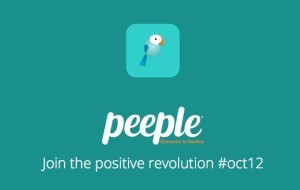Why Performance Media No Longer Works
It used to be that as an advertiser, you could scale your business and succeed using just Google and Facebook (and eventually Amazon). You could track the most recent sources and behavior of all your conversions and understand who your customers were and where they came from.
But everything you thought you knew about performance media has been turned upside down.
Why? First, measurement. Performance media as we knew it was mostly measured through last-touch attribution and multi-touch attribution. While last-touch attribution was simple, tracking where someone who “converted” came in from is almost always incomplete. And even with a solid multi-touch attribution model, Apple and Google have already begun to remove the ability of these models to be effective.
In short, your performance media measurement models need to be overhauled. And with that in mind, I’m going to let you in on a secret: All media is performance media.
What modern performance measurement comes down to is having regular, reliable measurement of the contribution of each media channel, whether digital or traditional, online or offline.
If we run a campaign on Amazon, we know we will see a return on ad spend [ROAS] figure (even if they grade it themselves). On Facebook and Google, we can still get a decent understanding of who clicked through and who ultimately converted.
But there are other media channels that are primed to steal performance market share — even if they initially make brands feel unsafe. This includes everything from video to outdoor to emerging social media platforms. That can be challenging since sometimes these channels have been labeled “brand media,” which sounds sleepier and less effective than performance media. But they all drive sales and conversion right away and, bonus, over a longer period of time as well. We just need measurement that captures this.
The truth is that all media can be correlated to sales without sacrificing a brand’s story. How? With the right measurement solution, even TV can now be linked to conversions like site traffic, leads and searches. Outdoor billboards, now digitally enabled and synced with mobile phone location data, can measurably lift website traffic or even retail foot traffic. Even the fast-growing medium of social or influencer content is being mapped to direct sales.
But the most important development is holistic, AI-powered measurement that calculates ROAS across all media channels for all sales, online and offline. These solutions ingest the data you have on hand: sales revenue, marketing metrics and more, augmented with macro-level marketing data to expand your organizational understanding of what’s driving the business and to find new revenue opportunities.
This more advanced AI software is not only affordable for even the smallest brands, but it can bring in numerous data sources to break apart what’s going on based on the economy, market conditions, competitors, and other variables much faster than older systems. That means you will not have to wait a year to get data — it will only be a manner of weeks.
Media diversification has changed the rulebook. Google, Facebook and Amazon have been effective partners for performance-driven brands, as their scale provides simplicity. But at a certain point, advertisers will inevitably hit the point of diminishing returns — and that’s when diversification becomes necessary.
It’s important to understand that brands can only grow through investing in incremental reach of audiences and incremental channels. Relying solely on Google, Facebook and Amazon guarantees that they eventually will not be able to scale costs effectively anymore. Companies that max out on these platforms usually end up becoming so driven towards lower-funnel messages ruled by the impulse to “buy now” and “convert quickly” that they risk forgetting to build a brand that can last into the future.
In order to reach the next level of sales and brand longevity, brands must diversify their media mix — considering both digital (TikTok, Pinterest, Snap) and traditional (TV, out-of-home, print) channels.
Finally, remember that AI is your friend.
With programmatic video, programmatic display media, programmatic retail media, programmatic everything… it’s not just difficult for a marketing manager to operate all necessary automated platforms. It’s impossible. And with increasingly complex platforms regularly entering the market, brands can’t expect their employees to run all of their media in-house anymore — each platform has completely different needs and complexity.
That’s where artificial intelligence comes in.
AI is more than just a buzzword. AI-enabled media is predicted to make up $370 billion in ad spending this year and is projected to account for $1.3 trillion by 2032. That’s more than 90% of ad spending.
If brands don’t start adopting AI-based optimization and management technologies soon — ensuring that they have the right trading desk relationship as well as the right AI-enabled software for platforms on the rise — they’ll be left behind.
Nobody has a crystal ball, and nobody can predict how the landscape for performance media will continue to shift. With the right partner and a new strategic mindset, you don’t have to.
(28)
Report Post





